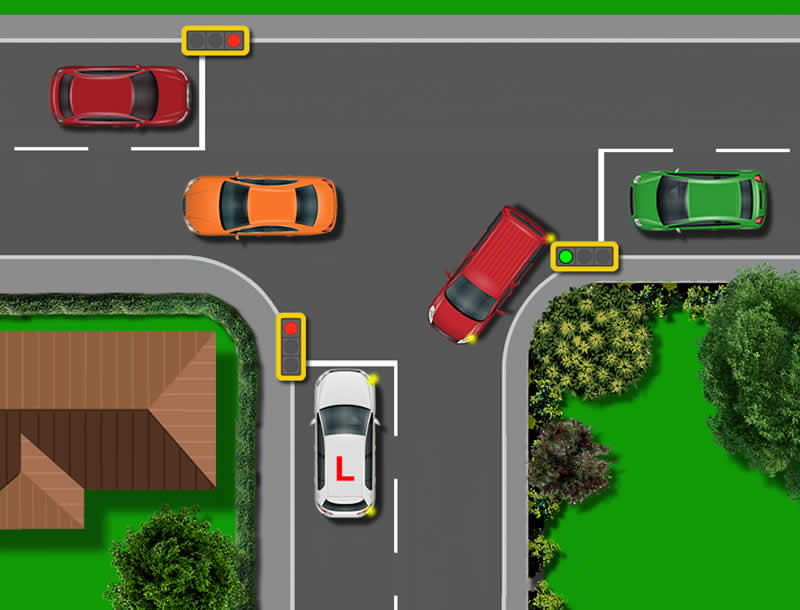From unmarked junctions to marked junctions, we’ll now take a look at controlled junctions. Whilst learning to drive, it’s important to experience as many different junction types as possible. You’ll certainly be taken through a wide variety of junctions during the driving test and this includes controlled junctions.
What are Controlled Junctions?
Controlled junctions make use of traffic lights to control the flow of traffic. Controlled junctions are located in areas with high traffic flow. Being as these junctions are controlled by traffic lights, means there’s less potential for accidents. Along with increased safety, an additional objective in the use of traffic lights is to streamline the flow of traffic and reduce congestion.
Where Will You Normally See Controlled Junctions?
Controlled junctions can be found everywhere from busy urban environments, to primary routes including dual carriageways and major A roads. Roundabouts, crossroads and junctions that make use of traffic lights are all forms of controlled junctions and can feature either single or multiple lanes.

Unlike most marked junctions that feature a broken give way line, controlled junctions feature a solid stop line. When the traffic light is red or amber, you must stop your car just before the stop line.
The amber phase means stop, however, you may continue through the traffic lights only if you have already crossed the stop line, or that you are so close to the stop line that braking abruptly may result in a rear-end collision.
How do you Approach a Controlled Junction?
Not only should you be aware of your immediate surroundings, but also to the mid and far distance. Look ahead and attempt to locate traffic lights in the distance. Anticipate and planning means you can assess the lights to anticipate what phase they are likely to be on when you arrive at them.
For example, if the lights have been on green for some time, you can anticipate that they are likely to turn red as you near them, then plan accordingly. As with all junctions, use the the mirror, signal, position, speed and look routine as you approach.
Learning to Drive at Junctions
Junctions can be challenging and complex and take a lot of practice. for further information about the different types of junctions, see learning to drive: junctions.